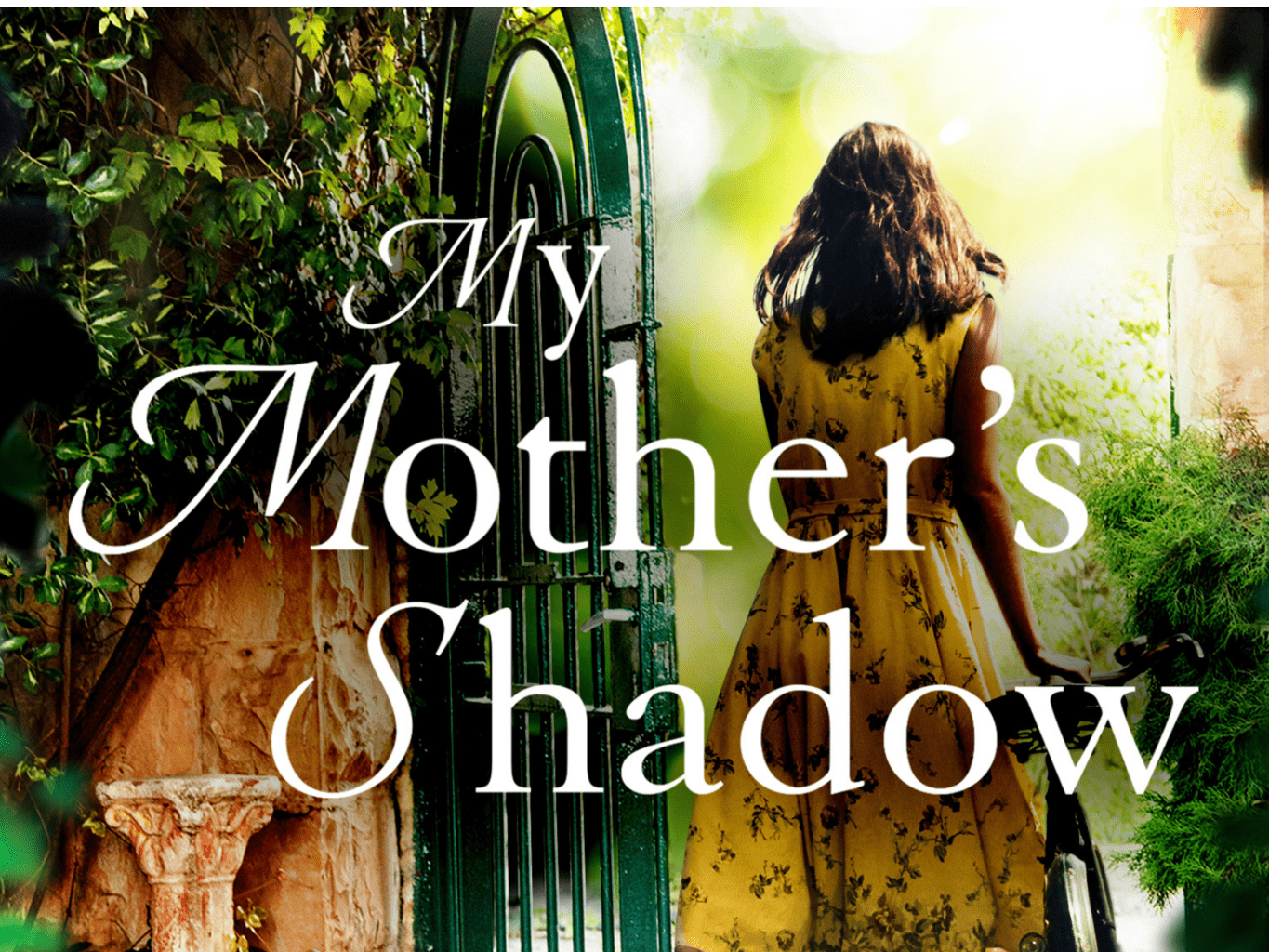What first inspired you to write My Mother’s Shadow? And did the focus of the story change as you were writing it?
I usually carry bits of ideas around with me for ages before they take shape, so it’s not always easy to pinpoint the very first inspiration of a novel, but the first seed of Addie’s story stemmed from a conversation with a friend a few years ago. She’d recently learned of an older sister she hadn’t known existed, a woman who was now eager to become part of my friend’s life. It kept coming back to me, the thought of this person who has no immediately clear place in your life and yet seems to have the strongest claim on it that there could possibly be. I was wondering how I would feel in that strange no man’s land between family and strangers. Would I be thrilled and excited? Would I be indifferent? Jealous? Eventually, the story changed and became a novel about mothers as much as sisters, but this little initial kernel still remains – and I’m still not quite sure how I’d feel if it happened to me…
You explore both the joys and the difficulties of mother-daughter relationships in the book through the different characters and their experiences. Did you draw on your own experiences of family to help portray these relationships?
Mothers are often romanticised in literature, sanctified or demonised, when real life is rarely that simple. I’ve had several strong female figures in my life but, rather than actually basing any one character on them, it was more the complexity of those relationships that found its way into the portrayal of the mothers in the book; how these relationships changed and developed over the years, what they taught me to do or do differently, the fallibility of motherhood versus its unchanging core values. I wanted them to be humans rather than figures. If you take Elizabeth, for example, she’ll inspire a range of emotions ranging from respect, empathy and admiration, all the way to dislike and impatience. Similarly, we might feel deeply for Madeleine Roberts because of her history, while perhaps not particularly liking her as a character.
There is a whole other aspect behind the mothers in the book, however, and that is the difficult and sad journey of unmarried mothers in the 1950s and 60s. Liz’s experience is an amalgamation of the many heart-wrenching stories in history books, novels and online forums about what unmarried mothers went through during a time when extramarital pregnancy – and that included sexual abuse, rape and even a pregnancy by a fiancé – was condemned by church and society. Unmarried mums had to cope with the notion of their motherhood as a ‘sin’, which could only be washed off if the product of that pregnancy was made to disappear. Unfair stigma and prejudice would close all doors, jobs and housing to them, reiterating over and over again that they were unfit to become mothers and didn’t deserve to keep their children, until they believed it themselves.
Forced adoption in its many shades and gradations had a devastating effect on most women. Many continued to love their baby even if it was forever lost to them and many suffered their entire lives from that one moment when the mother-child bond was severed. Reading their stories, I was deeply moved by the power of that bond and that, too, has inspired the mothers in my book.
What inspired you to explore adoption and the treatment of ‘fallen women’ in the 1950s?
The way unmarried mothers were treated and the stark issues of sin, punishment and stigma relating to motherhood, all of that might seem like something out of the dark ages to us when in reality it was only a couple of generations ago. It wasn’t all that long ago that an unwanted pregnancy could send you to the workhouse on grounds of ‘insanity’ and some of us might well still know family members who have a similar story to tell. My own grandmother, in fact, was a single mother – the father of her baby took off when he learned of the pregnancy – and even though she was able to keep the baby, the stigma of single motherhood changed every single aspect of her life.
A lot of women had to live with their story in silence, a by-product of the shame and guilt drummed into them by church and society, and they often suffered as much from that decade-long silence afterwards as they did from the actual experience itself. I would never presume to truly know all the nuances and facets of what they went through, but with every story of silent suffering I read, I felt more compelled to give it an outlet, even if only in the fictional space of a novel.
In your Author’s Note you discuss some of the books that you used for historical research for My Mother’s Shadow. Did you draw on any real-life stories to help form Addie, Phoebe and Elizabeth’s narrative?
There are no real-life models behind Addie, Phoebe, Liz and Madeleine Roberts; they’re purely a product of my imagination. Still, a lot of their individual and shared experiences surface as common threads in my historical research. Phoebe’s drive to look for her mother is that of many adopted children looking for what they feel might be a missing piece of their identity. Liz’s difficulties in relating to Addie mirror some of the struggles that young women forced to give babies for adoption might have faced in subsequent relationships. And Madeleine’s dreadful experience with her miscarriages was a small but nonetheless heart-wrenching aspect of motherhood in those days.
Addie and Phoebe look to the past to find answers about their family and how their lives began. Why do you think family history is important to our identity?
I’ve always been fascinated by family history, partially by the stories themselves and partially because I think they give our lives an extra dimension that helps us understand who we are. Whether we want to or not, we all are a product of our family, our parents, our mothers. Their own experiences directly impact what they think is important to teach us and will thus surface in our lives in different ways. I think that understanding those experiences better helps you understand yourself and that is, in essence, Addie’s story. Discovering what fed into the psychological and emotional make-up of her mother finally makes her understand what drove the relationship between the two of them. It enables her to make her peace with it and, most importantly, grow and develop in the course of the story.
In the novel you write about the material items that connect characters to those they have lost, such as the Hermès handbag that Addie finds in her mother’s study. Are you sentimental about objects and their past?
Yes, much to my husband’s despair! I have a cupboard full of little mementos which I’m sure other people won’t think remotely spectacular – an old nut grinder, an ancient driver’s license, my grandmother’s first camera, a chipped sherry glass – but which all come with a story or a memory that makes them special to me. The shiniest, glitziest piece of jewellery isn’t nearly as exciting to me as the simple gold chain with the funny tassels that my grandmother bought with her first ever proper salary. She started her own photography business in her twenties, which was incredibly tough in a time when women were not meant to be career women. I just love the image of her walking into the grand entrance hall of the opera, perhaps a little shy and definitely very young amidst all the grand society ladies, but more excited and proud in her new tasselled necklace than any of them could ever have been in their expensive finery.
Hartland is such a vivid and enchanting setting. Is the house a creation of your imagination or is it based on any real locations?
When my husband and I first moved to London we fell in love with the English countryside. We took out a National Trust membership and we’ve been on every country walk and to every manor house and garden within a fifty-mile radius of London, and many beyond. Hartland was partially inspired by a particularly lovely place called Polesden Lacey, a very leafy, green country house in the North Downs, Surrey.
My Mother’s Shadow is your first novel, after working as a fiction editor for over a decade. What motivated you to take the leap to becoming a full-time writer yourself?
Taking that leap was actually a lot more complex than I had initially anticipated and the learning curve was very steep! Editing comes with all its own challenges, so it’s not necessarily that one is easier or more difficult than the other, but I will say that editing is perhaps a slightly calmer activity than writing. You bypass all that creative chaos, panic and nocturnal anxiety and step in later, able to look at the issues from the outside. But you also miss all the amazing milestones of that creative journey: the incredible sense of achievement when a solution to the problem suddenly presents itself and everything falls into place; when you’ve been hacking away at a particularly thorny scene for days and suddenly find the perfect answer (usually in the shower!); when you’ve agonised and persevered and written for months and you finally get to The End.
I loved being an editor and I still heave a small sigh of relief when I can take off my author’s hat and move from creative chaos to the calmer waters of analytical, methodical self-editing – but I love being a writer just as much. It’s joyful and spontaneous, unpredictable and fun, so I’m very glad that being an authormeans I get to do both, the writing and the editing.
Are you working on any more novels at the moment?
I’m currently working on another book that brings together a historical plot and a contemporary story. In the late 1930s, a group of friends come together for a last glorious country house weekend at Summerhill, a beautiful, remote estate on the Cornish coast. Summerhill belongs to the young Hamilton sisters, Madeleine and Georgiana, and promises safety and shelter against the looming threat of war. Before the weekend is over, however, tragedy has struck and none of their lives will ever be the same. Seventy years later, in 2009, Chloe – a struggling, young photographer living in Plymouth – crosses paths with old Madeleine Hamilton, now a famous children’s book artist. An unlikely friendship develops as they uncover an intricate web of love and loyalty, secrets and lies.
(Originally published in the paperback edition of My Mother’s Shadow 2017)

